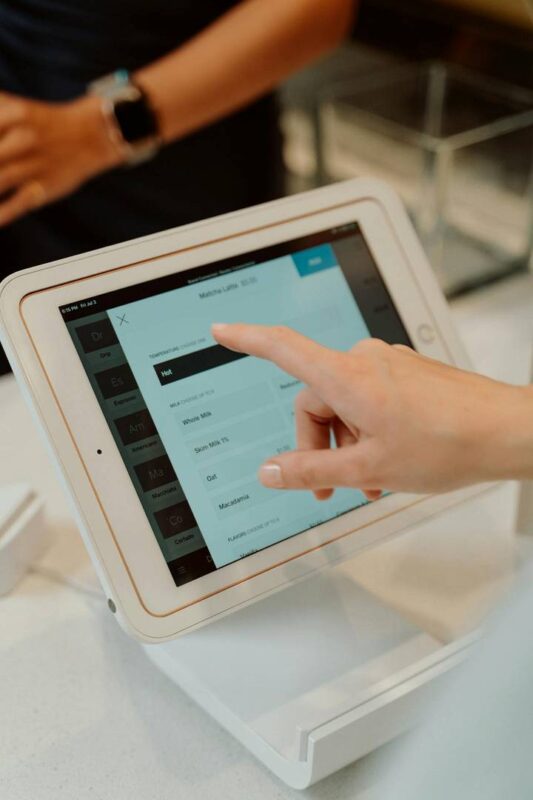Digital Ordering in the Heartland: How Small-Town America is Catching Up
4 min read
As technology reshapes how we dine, shop, and connect, small-town America is increasingly embracing digital ordering to keep pace with modern consumer expectations. What was once seen as a big-city convenience is now a growing trend across rural diners, mom-and-pop cafés, and roadside grills. The quiet digital revolution in these communities is helping restaurants streamline operations, enhance guest satisfaction, and even boost profitability — with pay at table solutions leading the charge.
The Rise of Digital Ordering in Small Towns
Historically, many restaurants in rural America have operated on pen-and-paper systems and traditional waitstaff models. However, the COVID-19 pandemic was a major catalyst, pushing even the most technology-averse establishments to reconsider how they engage with customers. As contactless service became a necessity, digital ordering platforms — from QR-code menus to integrated point-of-sale systems — saw a dramatic uptick.
Now, digital ordering is no longer just a safety measure; it’s a strategic advantage. Small-town eateries are discovering that tech-savvy diners expect the same ease of use and personalization they’d find in metropolitan hotspots. From mobile ordering to table-side checkout, rural restaurants are reinventing the guest experience.
Why Small-Town Operators are Investing in Tech
1. Efficiency and Speed
Digital ordering reduces order errors, improves kitchen communication, and shortens table turnover time. For venues that operate with lean staffing, this is crucial. An app or tablet-based ordering system allows customers to browse the menu, customize items, and submit orders directly to the kitchen — without waiting for a server.
2. Customer Expectations Have Evolved
Rural diners are no longer isolated from urban trends. Thanks to social media and travel, they’ve grown accustomed to modern dining conveniences. Whether it’s mobile apps, personalized deals, or pay-at-table options, small-town guests are seeking the same seamless experience they find in cities.
3. Cost-Effective Long-Term Investment
While there may be initial costs, digital ordering systems save money in the long run by reducing paper waste, improving labor efficiency, and minimizing order mistakes. For many family-run establishments, this translates into significant monthly savings.
Spotlight: The Role of Pay at Table Solutions
One of the standout features transforming rural dining is the introduction of pay at table solutions. This technology allows customers to settle their bills via a smartphone, card reader, or touchscreen device right at their table — no waiting for checks, no cash mishandling, and fewer walkaways.
Benefits of Pay-at-Table Technology:
-
Faster Turnover: Guests can pay and leave as soon as they’re ready.
-
Improved Tipping: Digital tipping prompts often result in higher gratuities.
-
Enhanced Security: No need to hand over cards or exchange physical cash.
-
Data Collection: Restaurants gain access to valuable insights like average spend, payment methods, and loyalty behavior.
For restaurants operating with just a few servers or trying to keep up during peak hours, pay at table solutions remove a major bottleneck in the customer journey.
Real-Life Example: From Diner to Digital
Take the case of a small café in Iowa — “Rusty Spoon Café.” In 2023, owner Martha Simmons installed a simple digital menu system with QR codes and a pay-at-table platform. The café, previously known for long waits during breakfast hours, saw immediate benefits. Orders became more accurate, kitchen wait times dropped by 20%, and average customer spend increased as diners were more likely to add extras when browsing the menu digitally.
“Customers love the independence,” says Simmons. “Our regulars feel like they’re in control, and we can focus more on service and less on paperwork.”
Overcoming Challenges in Rural Rollouts
Digital adoption in small towns doesn’t come without its hurdles. Some challenges include:
-
Internet Connectivity: Not all regions have reliable Wi-Fi, which can affect performance.
-
Customer Resistance: Older patrons may prefer traditional methods.
-
Staff Training: Employees need time and support to adapt to new systems.
Solutions to these barriers often include hybrid approaches. For example, keeping physical menus for those who prefer them, offering assisted digital ordering for older guests, and choosing POS systems that work offline or on low bandwidth.
The Future of Dining in Small-Town America
As more rural establishments embrace digital ordering, the gap between urban and small-town dining experiences continues to narrow. It’s not just about keeping up — it’s about thriving. Enhanced service, operational efficiency, and increased revenue are no longer out of reach for small-town restaurants.
Key Takeaways:
-
Digital ordering is redefining rural hospitality.
-
Pay at table solutions are at the heart of operational improvements.
-
Adoption is rising due to shifting expectations and cost efficiencies.
-
Community-specific challenges are being met with flexible tech solutions.
Final Thoughts
The heartland is undergoing a quiet digital transformation, and restaurants are leading the charge. From roadside diners to town-square cafés, digital ordering and pay at table solutions are empowering small-town America to deliver big-city convenience with hometown charm. As technology becomes more accessible and affordable, even the smallest of eateries can offer a modern, efficient, and delightful dining experience.






